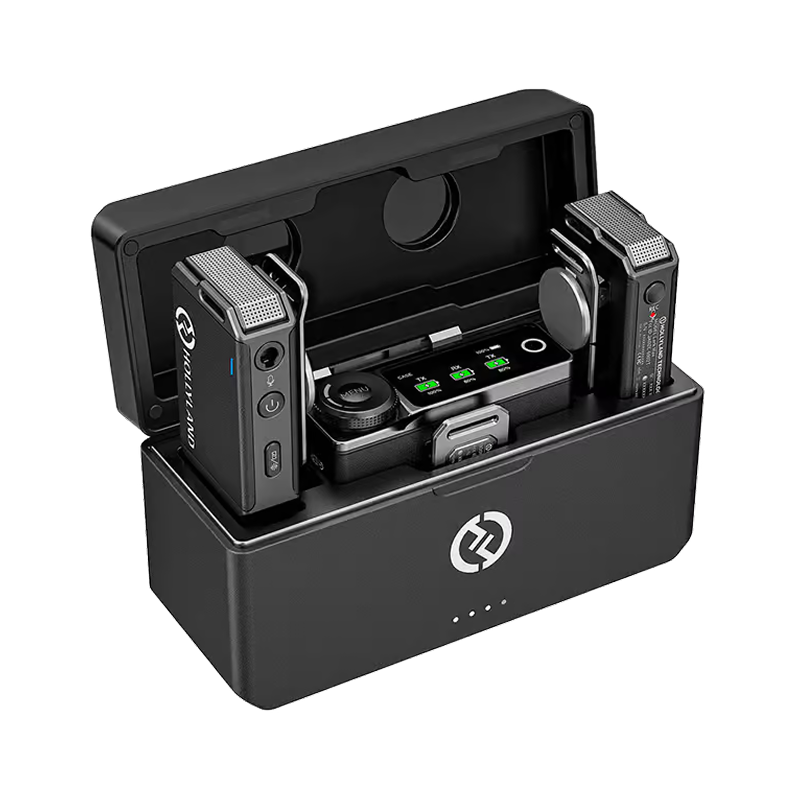Audio jacks are the unknown hidden riches of our current technology-driven world. Do you know why? Well, they serve as the vital connection between all of our audio equipment and enable the transmission of sound in multiple formats.
Yes! Audio jacks play an important role in our daily lives. From just plugging in headphones to listen to music without disturbance to connecting microphones for clear communication. They serve as the entry point for immersive gaming experiences, allowing musicians to augment their instruments and providing flawless audio in professional installations.

In fact, as technology advances, the types of audio jacks available have grown, with each one tailored to certain demands and uses. Are you aware of them?
If not, then below in this post, we will get into the world of audio jacks, learning about their different types.
An Overview of Audio Jack
The transfer of audio signals across different devices is now being made easier by audio jacks. These seemingly insignificant connectors exist in a range of shapes and sizes, but their function is critical in our daily lives. The following is a general guide to audio jacks.
What are Audio Jacks?
Audio jacks, at their core, are standardized connectors designed for the transmission of audio signals. They are made up of a socket (female) and a plug (male) that are joined by metal contacts. The most common audio jack configuration is the TRS configuration, which consists of a tip (T), a ring (R), and a sleeve (S). Although the amount and layout of these components change based on the specific application and requirements, audio jacks are highly versatile.
What are Audio Jacks Used for?
Audio jacks are used in several kinds of industries and serve both consumer and professional purposes. Their adaptability makes them useful in the field of audio connection. Here are some of the most common uses for audio jacks:
- Private Listening: Audio jacks link headphones or earbuds to personal devices. This allows people to listen to music, podcasts, or audiobooks without bothering others.
- Recording and Communication: To ensure crystal-clear audio transmission, microphones are connected to sound systems, recording equipment, and communication devices via audio jacks.
- Amplifying Sound: Audio jacks are used by speakers and amplifiers to connect to audio sources. Amplifying and disseminating audio from many devices.
- Musical Performances: Audio jacks connect electric instruments. For example, guitars and keyboards to amplifiers and sound systems, and it allows musicians to perform live or record their music.
- Professional Audio Systems: Audio jacks are essential in professional audio systems for connecting audio mixers, signal processors, and interfaces, ensuring precise and dependable audio transmission.
So you now know that audio jacks are an essential part of life, allowing us to interact with audio in several ways. As we proceed, we will look at the various types of audio jacks available, each geared to certain purposes and demands.
Types of Audio Jacks
There are many different types of headphones available today, each with its own jack. As a result, it’s critical to understand the many types of headphone jacks available. This ensures that you get a pair that will function with your device. I understand there is a lot of misunderstanding about headphone jacks. Let me begin by stating that there are three sorts of audio jacks:
- 2.5mm Jack
- 3.5mm Jack
- 6.25mm Jack

Let’s know them in detail below!
The Three Most Common Types of Audio Jacks:
2.5mm Audio Jack
This diminutive audio jack, measuring 2.5mm in diameter, was once a standard for early mobile phones and specific audio equipment. Despite its small size, it played a vital role in transmitting mono audio signals. However, with the evolution of technology, it has gradually seen less use due to its limited compatibility with modern devices.

3.5mm Audio Jack (1/8-inch)
The 3.5mm audio jack, also affectionately known as the mini-jack or headphone jack, stands as the cornerstone of audio connectivity. Measuring 3.5mm in diameter, it has become the ubiquitous choice for a wide range of consumer electronics. From smartphones and laptops to portable audio players and headphones, this jack serves as the linchpin for countless audio experiences. But that’s not only the only contribution of a 3.5mm audio jack.
It is also the most common audio output for most wired and wireless microphones. For example, the Rode Lavalier GO has a 3.5mm TRS connector, as does the ShureMVL lapel microphone. Similarly, when it comes to wireless microphone systems, one of the reasons creators pick the Hollyland Lark Max is its vast compatibility due to the 3.5mm output interface. It is a popular, versatile microphone that fits DSLR cameras, action cameras, camcorders, mobile phones, and computers, enabling them to receive wireless audio signals.


Hollyland LARK MAX - Professional Wireless Microphone
A professional wireless microphone system featuring studio-quality audio with advanced noise cancellation.
Key Features: Studio-Quality Audio | Magnetic Attachment | 8GB Internal Recording
Its versatility lies in its ability to accommodate both mono and stereo audio signals. This makes it the go-to choice for personal audio enjoyment.

6.35mm Audio Jack (1/4-inch)
Stepping up in size, the 6.35mm audio jack, often referred to as the quarter-inch jack, boasts a sturdier build. Measuring, as the name implies, a quarter of an inch in diameter, it is a staple in the realm of musical instruments, amplifiers, and professional audio equipment. This jack’s larger profile not only allows for more robust connections but also contributes to its reputation for durability and reliability in demanding environments.
Musicians and audio professionals appreciate the quarter-inch jack for its steadfast performance in live settings and recording studios.

Other Types of Audio Jacks
Besides the well-known 2.5mm, 3.5mm, and 6.35mm audio jacks, several other specialized connectors play unique roles in audio connectivity. These jacks cater to specific devices and technologies, growing the choices for seamless audio transmission.
Lightning Jack
Developed by Apple, the Lightning jack is a proprietary connector used in mobile devices like iPhones, iPads, and iPods. This digital interface not only facilitates audio transmission but also supports charging, data transfer, and other functionalities. This makes it a versatile component of Apple’s ecosystem.

Magnetic Jack
Magnetic jacks, also known as MagSafe connectors, gained popularity in Apple’s laptops. They use magnets to ensure a secure and reliable connection. While used for charging, some magnetic jacks also support audio transmission. Providing an added layer of convenience and safety in laptop usage.

USB Jack (A and C)
Universal Serial Bus (USB) connectors have become omnipresent in modern technology. They serve as multifunctional interfaces capable of transmitting audio, data, and power. Within the USB family, two types stand out:
- USB Type-A Jack: This rectangular-shaped jack is one of the most familiar jacks found on a wide range of devices, from computers to gaming consoles. It supports various functionalities, including audio transmission. This later becomes a versatile choice for many applications.

- USB Type-C Jack: Characterized by its symmetrical, oval shape, the USB Type-C jack has become a standard for modern devices. Its compact size and reversible design have contributed to its popularity. It supports high-speed data transfer, charging, and audio transmission, making it a versatile choice for a wide range of devices, including smartphones, laptops, and tablets.

These alternative audio jacks showcase the evolving landscape of audio connectivity. As well as adapt to new technologies and device functionalities. Whether it’s the proprietary Lightning connector, the secure Magnetic jack, or the versatile USB Type-A and Type-C jacks. Each jack plays a crucial role in ensuring seamless audio experiences across a diverse range of devices and platforms.
Conclusion
Lastly, knowing the types of audio jacks is important for seamless connectivity and optimal sound quality. Whether you’re an audiophile or a casual listener, this guide empowers you with the knowledge needed to make informed decisions when it comes to choosing and connecting your audio devices. So, go ahead, plug in, and let the music play!
Remember, the right audio jack ensures that every note, every word, and every beat is delivered to your ears with precision and clarity, enhancing your overall audio experience.
Planning to create engaging tutorials about audio equipment and connectivity options? A wireless lavalier microphone lets your voice shine clearly, ensuring listeners easily understand the differences among various audio jack types.
FAQs
Q1. Is an audio jack required?
Audio jacks can provide a person with greater audio quality. The headphone jack is often referred to as a family of connectors used to send digital audio signals. In other words, audio jacks provide a person with high-quality audio content.
Q2. What is the best audio jack?
A 3.5mm headphone audio connector is the best and most recommended solution for portability. Headphones with a 6.35 audio connector are the finest solution for high-end audio systems. The 2.5mm audio jack is recommended for older devices, but it is not as frequently available as the 3.5mm or 6.35mm audio jacks.
Q3. How is a 2.5 mm jack used?
The smaller 2.5 mm size is more commonly used to connect headsets to devices such as landlines, lightweight two-way radios, and video cameras. Those demand a microphone as well as audio, which is why there is sometimes an extra stripe.

































.png)
.png) Français
Français .png) Deutsch
Deutsch .png) Italiano
Italiano .png) 日本語
日本語 .png) Português
Português  Español
Español 




